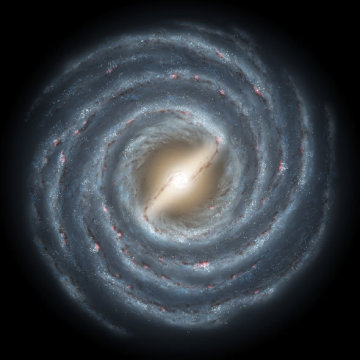Astronomers have discovered some of the oldest stars in our Milky Way galaxy by determining their locations and velocities, according to a study led by scientists at Georgia State University.
Just like humans, stars have a life span: birth, youth, adulthood, senior and death. This study focused on old or "senior citizen" stars, also known as cool subdwarfs, that are much older and cooler in temperature than the sun.
The Milky Way is nearly 14 billion years old, and its oldest stars developed in the early stage of the galaxy's formation, making them about six to nine billion years old. They're found in the halo, a roughly spherical component of the galaxy that formed first, in which old stars move in orbits that are highly elongated and tilted. Younger stars in the Milky Way rotate together along the galaxy's disc in roughly circular orbits, much like horses on a merry-go-round.
In this study, published in the November 2017 edition of The Astronomical Journal, astronomers conducted a census of our solar neighborhood to identify how many young, adult and old stars are present. They targeted stars out to a distance of 200 light years, which is relatively nearby considering the galaxy is more than 100,000 light years across. A light year is how far light can travel in one year. This is farther than the traditional horizon for the region of space that is referred to as "the solar neighborhood," which is about 80 light years in radius.
The astronomers first observed the stars over many years with the 0.9 meter telescope at the United State's Cerro Tololo Inter-American Observatory in the foothills of the Chilean Andes. They used a technique called astrometry to measure the stars' positions and were able to determine the stars' motions across the sky, their distances and whether or not each star had a hidden companion orbiting it.
The team's work increased the known population of old stars in our solar neighborhood by 25 percent. Among the new subdwarfs, the researchers discovered two old binary stars, even though older stars are typically found to be alone, rather than in pairs.
